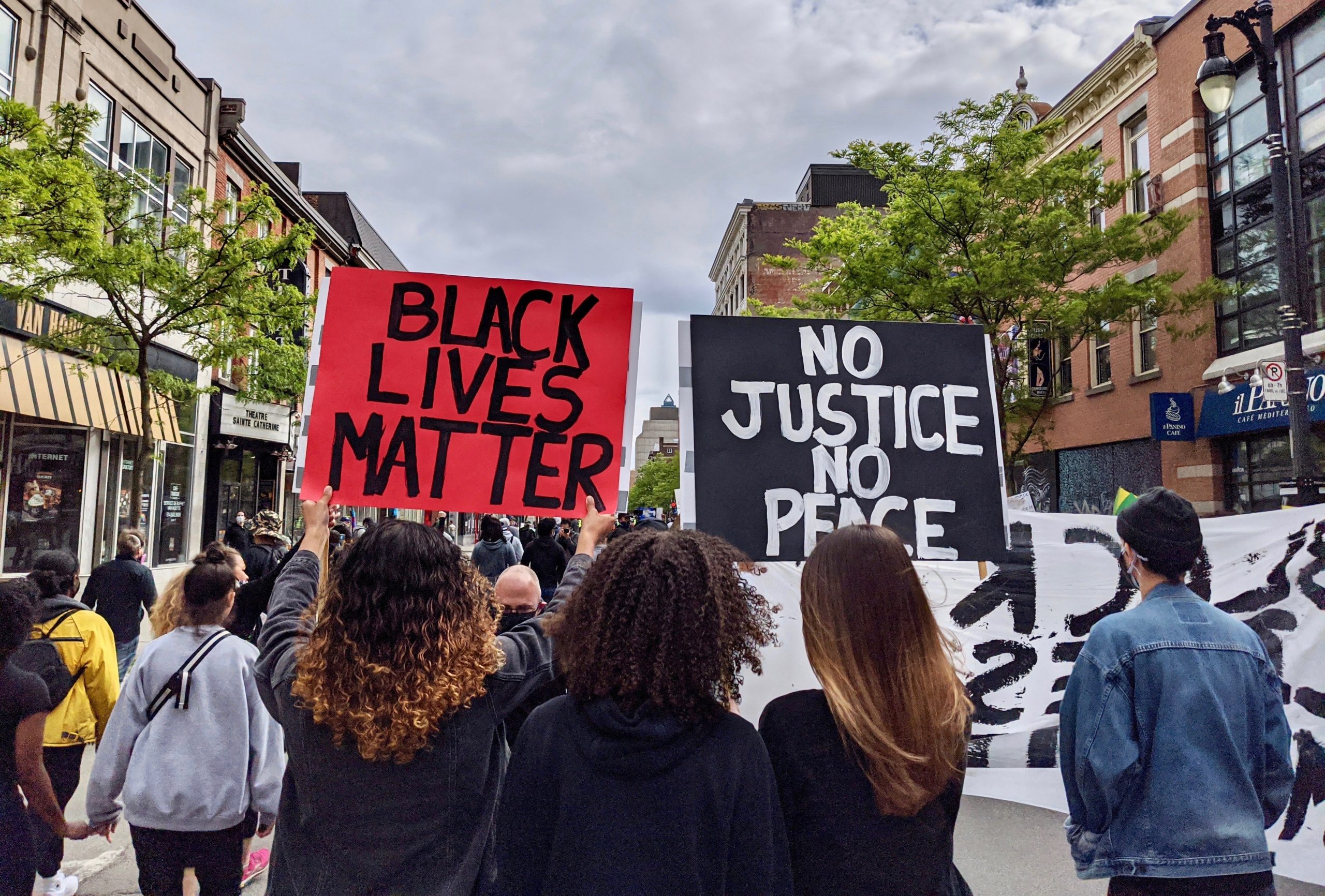Over 20,000 Montrealers came out to support a message against racism and police violence yesterday.
Clashes between police and protesters broke out Sunday night in the aftermath of a peaceful demonstration against police brutality. Organizers of the protest said they want the focus of the event to remain a message against racism and police violence.
An estimated 20,000 to 30,000 people gathered downtown to attend the protest, which had been dubbed Justice for Victims of Police Killings and was organized by a group of community activists. The event was created in solidarity with protests in the U.S. surrounding the death of George Floyd, a black man who was killed in Minneapolis, Minnesota last week after a police officer knelt on his neck for nine minutes. Floyd was suspected of using a counterfeit 20 dollar bill to purchase cigarettes.
Marlihan Lopez, one of the protest’s organizers, said the event aimed to address the systemic issue of police violence not only in the U.S., but in Canada as well.
“This is not an American issue, this is also a Canadian and a Quebec issue,” said Lopez, before naming Regis Korchinski-Paquet, a 29-year-old Black woman from Toronto who died after an intervention with the police last week. Police had been called to assist in a domestic conflict involving Korchinski-Paquet. Shortly after arriving, police emerged from Korchinski-Paquet’s apartment and informed her family that she had fallen from the 24-story balcony. The incident is currently under investigation.
Those who attended the protest said they came to support changes to systematic injustice. Chants such as “No justice, no peace,” “I can’t breathe,” and “Black lives matter” rang out throughout the march.
“I have four boys and we live to make sure that they will be growing in a safe place,” said Karen Abelard. “[Being] here is important not only for us, but for the future, for our kids.”
26-year-old Lindsay Williams, a white protester, said,“I feel like we need to use our voice and our privilege to do this. Even though this is scary and uncomfortable, it’s time to be scared and uncomfortable.”
Events began to turn around 8 p.m. Although the majority of protesters had left the area, police began lining up in full gear on certain streets, blocking the path.
“The moment that we want to do something for Black people they’re blocking us off,” said an anonymous protester in response to this issue. “We’re being peaceful about it [but] we’re still not getting the chance to get our word across.”
At 8:11 an SPVM bus equipped with a loudspeaker announced that, as some protesters were engaging in unlawful conduct, the protest was now deemed illegal. The crowd was ordered to disperse.
SPVM relations told the Concordian, “at this point objects were thrown to [sic] police officers, so that’s why we gave the warning and said that the demonstrations were illegal— some criminal act[s] had already started.”
According to Luca Caruso-Moro, a Concordia Journalism student who was live tweeting the event, there was still a large group of protesters demonstrating peacefully in front of the SPVM headquarters on St-Urbain when the message to disperse was played.
“[This] was then followed only seconds later by several tear gas canisters being shot into the air,” said Caruso-Moro.
Protestors dispersed as the police line advanced and officers continued to shoot tear gas canisters. Meanwhile, some individuals began breaking windows on the Bell building on St-Urbain, while other protesters yelled at them to stop. Some protesters gathered to form a barricade, which was eventually put to the side for a firetruck to pass.
“The majority of people that I saw continuing to demonstrate after the initial rounds of tear gas were fired were doing so peacefully,” said Caruso-Moro.
Clashes ended around 11 p.m., with officers continuing to monitor the area throughout the night.
Over 70 cases of mischief were reported, including vandalism and breaking and entering. Of the total 11 arrests, nine were for breaking and entering, one was for assault with a weapon, and one was for mischief. SPVM said that investigations are currently underway and may result in further arrests in the following days.
Marlihan Lopez said that, despite the clashes, the message of the protest should remain focused on justice against racism and police violence.
“The vandalism isn’t the story, the graffiti isn’t the story, the looting isn’t the story, and even the protest is not the story: the story is police violence, it’s anti-blackness,” said Lopez.
Another protest is scheduled to take place on Sunday, June 7.
Photos by Hadassah Alencar
CLICK HERE TO VIEW AND CONTRIBUTE TO OUR LIST OF RESOURCES
Concordia statement on Black Lives and demandsfor an anti-racist pedagogy
